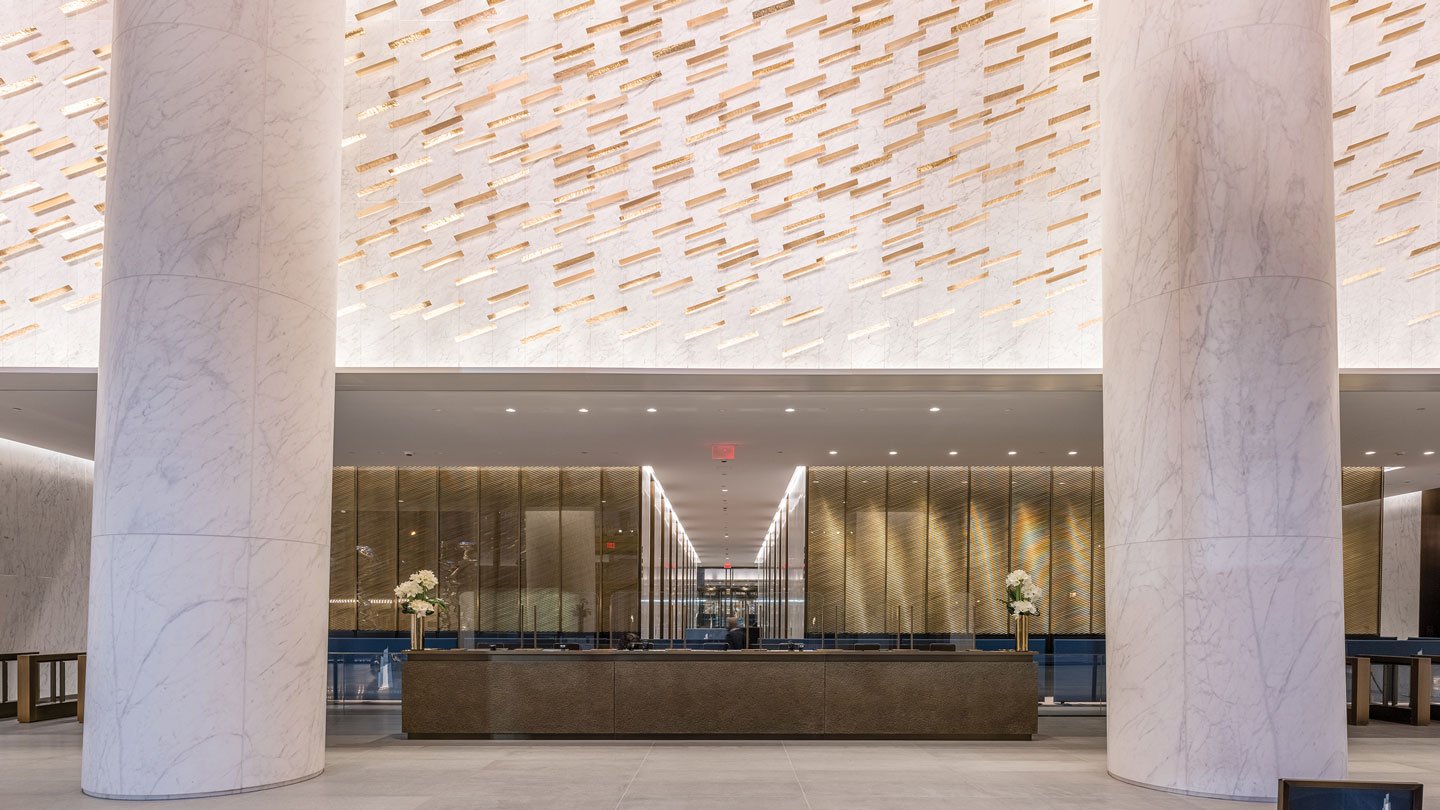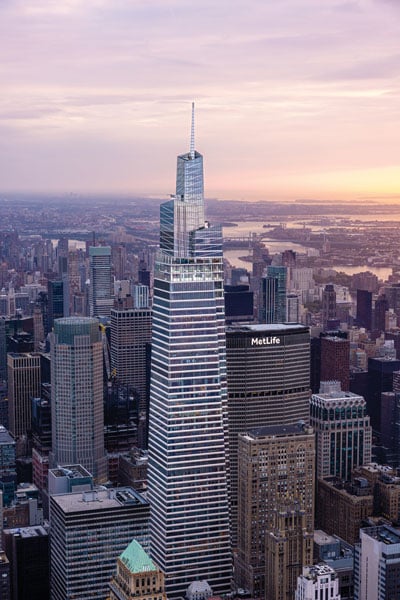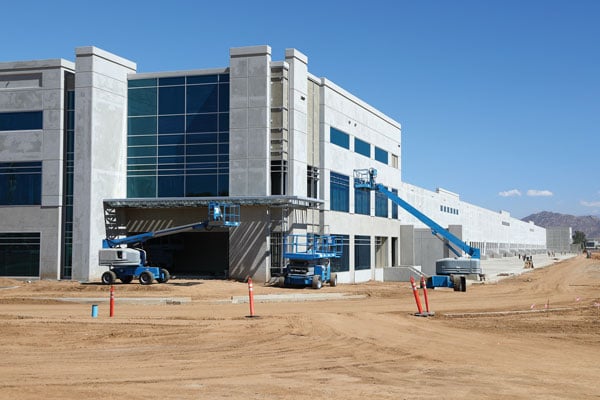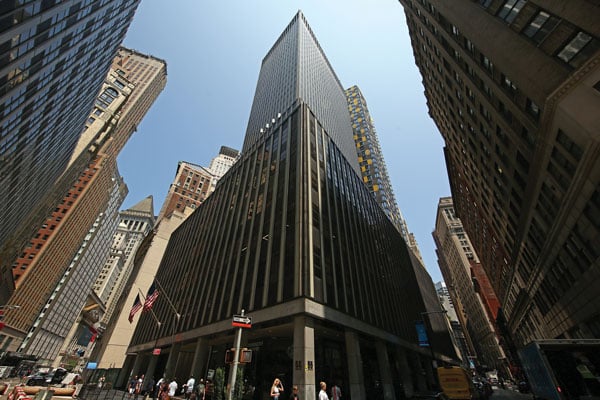
The New Realities of CRE Investing
Savvy investors will be open to adapting their old game plans and exploring new sectors as the industry anticipates renewed activity.
A sense of hope abounds that commercial real estate activity will increase later this year or early next year as anticipated Federal Reserve rate cuts take effect. When activity does pick up, investors will likely encounter a market that is far different from either the 2014-2019 pre-pandemic period or the years immediately following the outbreak.
The commercial real estate industry has been challenged by a historic run-up in interest rates that started in March 2022. “It was the steepest rise in 30 years,” said Darin Mellott, vice president of capital markets research at CBRE. “To add even more shock to the system, it came after a decade of ultra-low rates.”
After two years of high interest rates, Mellott said, the CRE industry should begin to experience a recovery in the latter half of 2024. “Nothing gangbusters this year,” he predicted, “but overall, investment volumes should increase 5% over last year. In 2025, we will see more [positive] momentum.”
“When interest rates are at a 3% to 4% level, real estate works at that pricing level,” said Steig Seaward, senior director of national research at Colliers. “The problem is, we have had such a fast run-up over the past 20 months or so — going from next to nothing up to where we are now — that it just caught a lot of people off guard.”
“We are no longer able to continue to factor in rental rate increases, so now, deals are not penciling out,” he continued. “There is, however, a tremendous amount of money sitting on the sidelines waiting to get deployed. We will need to see a few interest rate cuts first. Once we get those interest rate cuts, I think the markets will be off to the races and have a significant run.”
‘Generational’ Investment Opportunities Ahead?
Big problems in the market often create big opportunities and new realities.
“The office market is presenting a point in time where investors with a longer horizon with higher risk capital can potentially acquire generational opportunities due to the price mismatch that is in the market today,” said Aaron Jodka, director of national capital markets research at Colliers. “[Investors] will be able to reset the price with a new acquisition that would reset the rent basis and allow the investor to compete very well with the existing inventory that is in the market today.”
Near-zero Money Is Off the Table
Those once-in-a-generation opportunities, however, will likely not be financed with near-zero money.
“The biggest lesson investors should have learned over the past few years is to always avoid complacency,” Mellott said. “A lot of investors got complacent during the ultra-, ultra-low interest rate environment of the pandemic. Furthermore, investors must be aware that we live in a dynamic world that can impact the commercial real estate market more quickly than anyone realizes.”
Adding Value
Another new reality is that investors must thoroughly understand, in advance, just how the asset will make money.
“Investors who are looking to buy properties need to focus on the specific asset they are interested in and understand the dynamics of that asset,” cautioned John Chang, senior vice president, national director of research and advisory services at Marcus & Millichap Real Estate Investment Services. “Then they need to come up with a way to add value to the asset.”
Adding value could be realized through making upgrades to the property, putting in new anchor tenants, cutting costs, adding new management or using economies of scale. Whatever the value creation might be, investors need to have a plan. “This is a slightly different approach from the way investors have been handling new assets in recent years,” Chang said. “In recent years, investors were able to achieve their value creation more passively.”
No Burying Management Mistakes
Jim Costello, executive director, MSCI Research, agreed that commercial real estate is not a passive investment and never has been: “Today, if you do not manage a property in the right way, if you do not engage the right leasing broker to get the tenants in there, you are sunk. There is no longer any safety net of falling interest rates to bail you out of management errors. Today is a more challenging environment, but honestly, I think it is a more exciting environment.”
Costello stresses these points when he lectures at colleges. “People coming out of school today will be working in a different world than before,” he said. “They will have to be real estate people, not just financial engineers trying to put a different debt structure in place. Today, it is about putting the right tenants in the building and even making sure the toilet paper is changed on time — that’s what will drive success.”
Looking at CRE Sectors Going Forward
Reading today’s gloom-and-doom headlines, one would think the entire CRE industry is in trouble because it has been painted with the same broad brush of negativity. According to those interviewed for this article, however, many sectors are doing quite well, while others have strong long-term prospects but are working through a temporary oversupply of product.
The Office Market
As a result of the pandemic and changed working habits, many Class B and Class C office buildings in central business districts are in financial trouble, with prices falling dramatically and some investors devastated financially. Loan workouts are a growing problem for banks, and some cities are panicking about their tax base.
“There has been a change in the behavior of society with people working from home,” Chang of Marcus & Millichap said. “There may be a whole generation of workers lost to the office. No one knows how this will eventually play out.”
Currently, 12.7% of full-time employees work from home, according to Forbes, while 28.2% have a hybrid arrangement. Although this represents a steady growth in remote work, the majority of employees — 59.1% — still work in-office.
In Canada, employers are not getting workers back into the office in numbers like before. “Canadians are very polite but not necessarily cooperative,” remarked Raymond Wong, vice president of data solutions client delivery at Altus Group. Using Toronto as an example, he said about 60% of employees have returned to the office, but on Tuesdays through Thursdays, that number is closer to 72%, whereas on Mondays and Fridays, it is around 32%.

Top assets in the office market, such as One Vanderbilt in Midtown Manhattan, continue to be in high demand, while Class B and Class C office buildings are largely struggling with high vacancy rates. Max Touhey/Touhey Photography
The office market is a bifurcated sector, said Colliers’ Seaward. “Not all office properties are performing poorly. The newer trophy-class assets that are highly amenitized are in high demand. These are the facilities where employers want to relocate to. These properties also check a lot of boxes as it relates to ESG compliance. Then there are the older buildings facing many challenges. Owners must decide whether to invest additional capital in those old properties to bring them up to par with some of the competing assets.” (See “Office-to-Industrial Conversions: A Niche Market Worth Exploring” in the Summer 2022 issue of Development.)
MSCI’s Costello said top assets like SL Green’s One Vanderbilt in New York City are fully leased and getting rents of $300 per square foot. The other market is the Class B and Class C brick buildings. People talk about converting these buildings to residential, but that can be an expensive prospect.
Costello suggested that to make this type of conversion work, prices would have to be lower than they are today — effectively, the investor would have to buy the project at its land value. “The current owner of the building will refuse to let go of the project for the price of the land, hoping that the current tenants will stay in the building and that [the owner] will be able to refinance it at a lower interest rate two years from now. No owner is going to sell the asset at the price of the land, unless someone forces them to,” said Costello.
A repricing on a cost basis might be necessary, warned Jodka of Colliers. “If I own an office building that is vacant, I may need to sell it at a discount,” he said. If that happens, “the new owner has a different rental cost basis that they can implement. They can lure new tenants with a rental rate that I could not have competed with.”
Chang offered a stark example of a challenged office building: “There was a large investor whom I spoke with who had a $100 million-plus office building in San Francisco. The building was empty and a real albatross around the investor’s neck. [The investor] explored all his options to turn the building around, but he could not find what he considered a viable option. He decided to take all of his lumps at once and sell the building to a new investor for $45 million.”
Despite representing a loss of more than $55 million for the original owner, in the end the deal worked for both seller and buyer. The seller was able to get out from under the project, while the new buyer potentially made what some experts consider a generational investment.
“The original owner got out from under the carrying costs of that building and deployed the remaining $45 million elsewhere,” Chang said. “The new owner had a tenant ready to take the whole building. The building, however, needed expensive upgrading before the tenant would move in. Since the new owner purchased the building for $45 million, he could afford to make the expensive upgrades and still make a profit on the investment. Had he paid over $100 million for the building, he could never have made the deal work.”
Industrial Development
The industrial market is solid and has a long-term positive story to tell, according to CBRE’s Mellott. Short term, a substantial amount of new supply is being delivered that will take time to be absorbed, but on the positive side, new starts have trailed off. This will allow healthy demand to absorb the current space, he noted.

Net absorption of industrial space is expected to average 14 million square feet per quarter over the next two years. AvailableLight via iStock/Getty Images Plus
“People will continue to buy online and to buy at brick-and-mortar locations,” Mellott said. “That means we will need more industrial space. Industrial space will stay healthy.”
“Industrial demand has been good and should remain solid over time,” Chang agreed. “The challenge is, over the past couple of years, developers have added a lot of space. From 2018 to 2023, 10 metros accounted for half of all [industrial] construction, which includes Dallas, Chicago, Atlanta, Houston, Inland Empire, Phoenix, Philadelphia, Indianapolis, Salt Lake City and Columbus.”
The NAIOP Research Foundation’s Industrial Space Demand Forecast, First Quarter 2024 estimated that quarterly net absorption of industrial space would average 14 million square feet per quarter over the next two years, or 62.8 and 49.1 million square feet in 2024 and 2025, respectively.
Retail Opportunities
Retail real estate is an intriguing acquisition target today because the retailers that remain have survived a global financial crisis, a “retail apocalypse” and a pandemic, Jodka pointed out. “They have figured out how to work online with in-store pickup, etc. It could be argued that retailers are stronger today than before. I see an interesting upside potential. Many institutional investors are underweighted in retail and hospitality. These asset classes could capture more capital relative to other asset classes.”
Investors have grown accustomed to the negative headlines surrounding retail, but there are plenty of positives that shouldn’t be overlooked, according to Mellott. “There has not been any meaningful new supply for the past 10 years. What we are finding from a fundamental perspective is that retail is incredibly strong, and investors are beginning to take note of this. For a long time, retail had a cloud hanging over it, but investors are noting that the cloud is lifting. We see a pretty healthy retail market.”
Health Care
Health care is another strong asset class for investors, according to Jodka. “We are seeing a higher share of health care or medical office as a share of office transactions in the past couple of years. This is an area where office allocations have started to pivot toward medical office because health care fundamentals are far better than they are for pure office. You have a more stable tenant base and rents have been stronger. Overall, it is a strong fundamental situation.”
Hospitality
Hospitality has experienced a phenomenal run, with room rates and occupancies in many markets back to or above pre-pandemic levels, Jodka noted. He added that hospitality is a good play when viewed as an inflation hedge because the owner can reprice the room every day or every other day. “If you are facing rising costs or challenges, you can increase the room rate. You cannot do that with office and industrial when you have a 10-year lease in place,” he noted.
The overall profitability of hotels is up, but the sector has been hit with large wage increases and massive labor shortages, according to Chang. Limited-service hotels that cater to the business traveler are doing better than the full-service hotels, he added.
Multifamily
Considerable new supply is coming online in the multifamily sector, Mellott warned, but the projects being developed are in high-growth markets.
“We see new multifamily starts slowing and expect it will take another 24 months or so to work through some of the excess supply in certain markets,” he said. “From a fundamental perspective, this market does look quite positive. This view is supported by a relatively strong jobs market that supports household formation, a single-family housing shortage, and high interest rates that make owning a home much less affordable.”

Silverstein Properties and Metro Loft Management are converting 55 Broad Street, a 30-story office building in New York’s Financial District, into 571 market-rate apartments, making it one of the largest office-to-residential conversions in the city. Joe Woolhead
Multifamily investment offers good opportunities, Jodka said. He noted current pockets of development in the Southeast and Southwest — regions that have attracted strong population growth. Overall, however, there is an imbalance in supply and demand right now because supply is coming on too quickly. As a result, vacancies are rising and effective rents are falling.
This market presents possibilities for those with longer time horizons who can acquire buildings today and ride the next wave of demand because supply is shutting down, Jodka continued. “Once supply shuts down, there’s nothing behind it,” he said. “Once demand normalizes, vacancies will fall and rents will start to rise. You can have a successful value-add play right there.”
Niche Development
Investors today are far more aware of niche commercial real estate development opportunities than they were 10 years ago, according to Mellott, who points to data centers and self-storage as current niche bright spots.
Even so, Costello cautioned that in looking at niche markets, investors must ask what the upside potential is for these assets.
“Take student housing,” he said. “There is only so much growth there. Student housing can never be as big as multifamily in general because that market is satisfying a certain slice of the 18-to-24-year-old market. Another asset class, self-storage: What is the upside?”
But Costello said data centers are a different beast because they are tied to the business cycle. “The more digitalization we get in the economy, the more we will need data centers,” he said. “There is still a lot of uncertainty around this asset class, however, such as how much water access does a data center need? That is a huge issue.”
“We are seeing more capital pivoting to niche assets, data centers in particular,” Jodka said. “Data centers are an expensive investment. The types of spaces needed by hyperscalers, driven by AI, require more power and more capacity than we have in existing assets. More data centers are needed, but it is tricky for the typical investor: You need expertise, you need connectivity, you need to be where the fiber cables are, and you need to understand the dynamics of the market.” (See “Data Center Real Estate: Challenges and Opportunities in the Digital Age” in the Winter 2023/2024 issue of Development.)
A recent market report, North America Data Center Trends H2 2023, by CBRE detailed the growth of the dynamic data center market:
- In 2023, primary market supply grew 26% year over year to 5,174.1 megawatts (MW).
- An all-time high of 3,077.8 MW was under construction in primary markets, a 46% year-over-year increase. Construction increased most in Atlanta, growing by 211% to 732.6 MW under construction.
- The average monthly asking rate for a 250- to 500-kilowatt (kW) requirement across primary markets increased by 18.6% year over year to $163.44 per kW/month. Northern Virginia had a 42% year-over-year price increase, the largest among primary markets.
- Preleasing activity in primary markets is strengthening, with 2,553.1 MW (83%) of the 3,077.8 MW under construction preleased. Cloud providers continue to lease most available power capacity, but artificial intelligence is also driving significant demand.
- The overall vacancy rate for primary markets remains near a record low, at 3.7%. With few relocation options, most tenants are renewing existing leases rather than seeking new facilities.
- Power availability continued to influence data center operators’ location decisions more than geography did.
Ron Derven is a contributing editor to Development magazine.
CRE Investment Outlook for Canada: A Pickup in H2 2024The Canadian commercial real estate investment market slowed over the past year and a half, but there is optimism for increased activity in the latter part of 2024, according to Raymond Wong, vice president of data solutions client delivery at Altus Group. “We had a strong 2018 and 2019, then we got hit with the pandemic,” Wong explained. “Everything shut down in 2020 and then opened up in 2021 and 2022, with record investment activity.” Investment activity fell by 30% to 50% in 2023 due to high interest rates, the threat of a recession and high inflation. There was another issue as well: “As cap rates began to edge up, a bid-ask gap situation developed where sellers and buyers had different expectations. Sellers wanted to stick with their pricing, [while] buyers wanted a discount,” he said. According to Wong, there is property in demand and investors waiting on the sidelines for an indication that interest rates are coming down. Developers, gearing up for new construction mostly on the residential side, are keeping their permits up to date and lining up the materials and labor necessary for a quick start, he noted. Currently, interest rates in Canada are sitting at around 5%. Wong said the latest numbers show that inflation is dropping to below 3% in Canada, the Bank of Canada’s target area. (The Bank of Canada is equivalent to the Federal Reserve in the U.S.) “In Canada,” he asserted, “it is not a matter of if interest rates will drop, but when.” |
Calgary’s Subsidy to Convert Aging Office to ResidentialCalgary, Alberta, is offering $75 per square foot to help subsidize part of a big push to convert vacant offices to residential. This type of subsidy is getting some traction in other Canadian markets as well, including London, Ontario, according to Raymond Wong of Altus Group. “In the city of Calgary, their office vacancy rate was about 25%,” he said. “It is expected that this subsidy will eliminate close to 2 to 2.5 million square feet of vacant office space. This helps existing owners by taking this old product off the market, and it also allows this functionally obsolete product to be revitalized. Further, it will create more activity in the downtown and bring in much-needed new housing, new restaurants and other services.” |
The New Realities: 14 Takeaways
|



